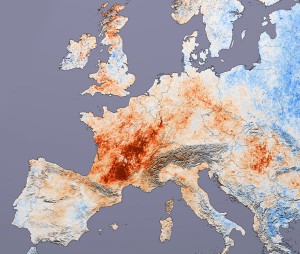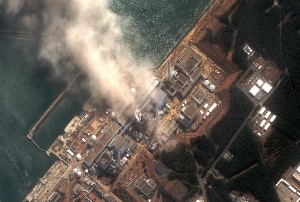
Climate Change Poses a Challenge for Nuclear Power Plants
Climate change poses a real and severe threat to the world’s 436 nuclear power plants, which generate almost fourteen percent of the world’s electricity production. In a recent story written by Jonathan Tirone of Bloomberg, climate change may increase electricity prices by a third in southern Europe as power plants struggle to cool down their facilities. In short, nuclear power plants use water to absorb waste heat after power generation and to cool the equipment and facilities used in production.
In a recent study conducted by the Austrian-based Institute for International Applied Systems Analysis, a group of scientists modeled the effects of climate change, noting widespread increases in water temperature by as much as 1°C in central and southern Europe, as well as an average decrease in river flow of more than 20%. With these changes, countries like Romania and Bulgaria will see wholesale electricity prices increase by approximately 30%.
These detrimental effects of climate change are not a recent occurrence, either. In the summer of 2003, France experienced a record-breaking heat wave that resulted in seventeen nuclear power plants to reduce or stop their production as river temperatures reached record highs.
Électricité de France, a French electric utility company that produces over 80% of its electricity from nuclear power, had to spend an extra 300 million euros to purchase electricity from neighboring countries. Spain and Germany, too, faced similar problems when several nuclear plants ceased production due to record high water temperatures.
The United States also faces problems regarding climate change and its nuclear energy production. In a research report conducted by the University of Washington, power plants in general will likely see a 4 to 16 percent drop in production between 2031 and 2060 due to increased temperatures and drought prevalence. Examples of affected American power plants have included Browns Ferry in Alabama, which reduced production to fifty percent in both 2008 and 2011, and Prairie Island in Minnesota in 2006.
One temporary solution to this problem is relocating nuclear power plants to the coast, where water temperatures tend to be cooler than on rivers and lakes. While this has been successful in Great Britain, where a majority of its power plants is on the North and Irish Seas, this is not the ultimate solution.
Recently, the Millstone nuclear plant, located on Long Island Sound in Connecticut shut down some reactors as the water temperature was too warm. In addition, sea level rise associated with global climate change poses a threat to coastal nuclear power plants. Similarly, hurricanes and tsunamis can create extremely dangerous situations for these power plants, as evidenced by Japan’s Fukushima disaster.
An alternative to using water-cooled systems exists today, in the form of dry-cooling systems. These use air instead of water, however, these systems operate at higher costs and lower production efficiencies. As increases in water temperature remain projected through the near future, nuclear power plants will need to devise new strategies to cope with the challenges of climate change and to ensure that energy production is not hampered.









Nuclear energy is a vital component of a clean energy strategy. Currently nuclear generation avoids the emission of over two billion tonnes of carbon dioxide each year.
Nuclear energy can address the competing needs for greenhouse gas emissions reduction, economic development and energy security. A wider deployment of nuclear power will reduce the cost of achieving emissions reductions, and increase the chances of meeting our climate change objectives. Nuclear is recognized as a crucial mitigation technology and many countries are planning to use nuclear generation to meet their emission reduction and energy supply objectives
[…] are reusing hydraulic fracturing fluid to reduce water requirements. Power plants are using dry-cooling systems to reduce their water requirements, too. In addition, urban planners are designing buildings with […]